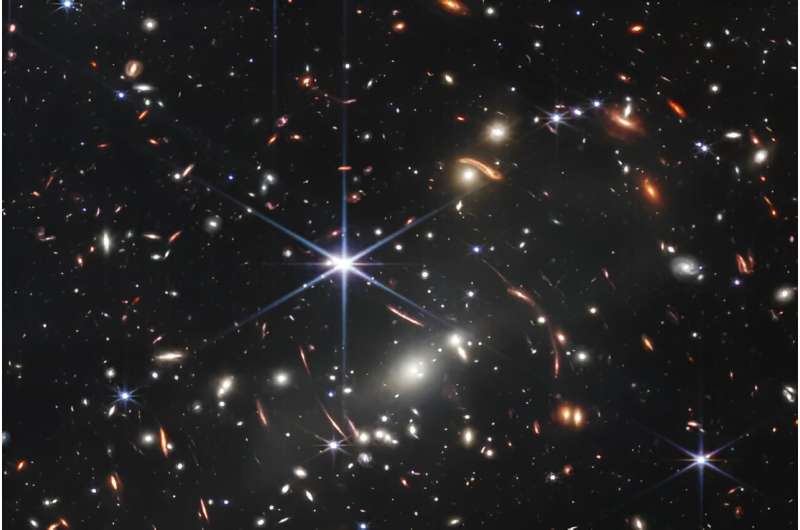Ever since the James Webb Space Telescope (JWST) captured its first glimpse of the early universe, astronomers have been surprised by the presence of what appear to be more “ultramassive” galaxies than expected. Based on the most widely accepted cosmological model, they should not have been able to evolve until much later in the history of the universe, spurring claims that the model needs to be changed.
This would upend decades of established science.
“The development of objects in the universe is hierarchical. You start small and get bigger and bigger,” said Julian Muñoz, an assistant professor of astronomy at The University of Texas at Austin and co-author of a recent paper published in Physical Review Letters that tests changes to the cosmological model. The study concludes that revising the standard cosmological model is not necessary. However, astronomers may have to revisit what they understand about how the first galaxies formed and evolved.
Cosmology studies the origin, evolution and structure of our universe, from the Big Bang to the present day. The most widely accepted model of cosmology is called the Lambda Cold Dark Matter (ΛCDM) model or the “standard cosmological model.” Although the model is very well-informed, much about the early universe has remained theoretical because astronomers could not observe it completely, if at all.
Launched in 1990, the Hubble Space Telescope was pivotal in developing and refining the standard cosmological model. It observes the universe in ultraviolet, visible and some near-infrared wavelengths of light. However, this makes it better at seeing some things than others. For example, Hubble is well equipped to view smaller galaxies that often contain higher populations of young, ultraviolet-emitting stars and less dust that tends to absorb shorter wavelengths.
Launched in late 2021, JWST provides an important complement to Hubble’s capabilities. By observing in the near- and midinfrared wavelengths, JWST can detect objects that are invisible to Hubble.
“We’re opening a window to the unknown,” Muñoz said. “We are now able to test our theories about the universe where we haven’t been able to before.”

Shortly after the Big Bang, things weren’t perfectly uniform. Tiny variations in density had a momentous impact on the future structure and evolution of the universe. Regions with greater density attracted more matter due to gravity, eventually leading to the formation of bigger and bigger structures.
To become so big so quickly, the ultramassive galaxies observed by JWST would in theory be possible only if more of these higher-density regions had developed right after the Big Bang. This would require changing the standard cosmological model.
Muñoz and his team tested this hypothesis.
They picked a range of cosmic time for which both JWST and Hubble observations are available. Within this range, they identified the most massive galaxies available in the JWST data and calculated the amount of change to the early density of the universe that would be needed for them to form.
They also calculated how many smaller galaxies would result from this hypothetical change. These additional smaller galaxies would have been observed by Hubble.
“But that’s not what we see,” explained Muñoz. “You cannot change cosmology enough to explain this abundance problem, given that Hubble’s observations would also be affected.”
So why is JWST finding so many ultramassive galaxies? One possibility is that they contain supermassive black holes. These black holes would heat up nearby gas, making the galaxies appear brighter and therefore more massive than they really are. Or the galaxies may not actually be in the early universe at all, but they look like they are because dust is causing their color to look redder than it would otherwise. This shift would make the galaxies appear farther away than they are.
In addition to Muñoz, study authors are Nashwan Sabti and Marc Kamionkowski of Johns Hopkins University.
More information:
Nashwan Sabti et al, Insights from HST into Ultramassive Galaxies and Early-Universe Cosmology, Physical Review Letters (2024). DOI: 10.1103/PhysRevLett.132.061002. On arXiv: DOI: 10.48550/arxiv.2305.07049
Provided by
University of Texas at Austin
Citation:
Discovery of unexpected ultramassive galaxies may not rewrite cosmology, but still leaves questions (2024, February 13)
retrieved 13 February 2024
from
This document is subject to copyright. Apart from any fair dealing for the purpose of private study or research, no
part may be reproduced without the written permission. The content is provided for information purposes only.